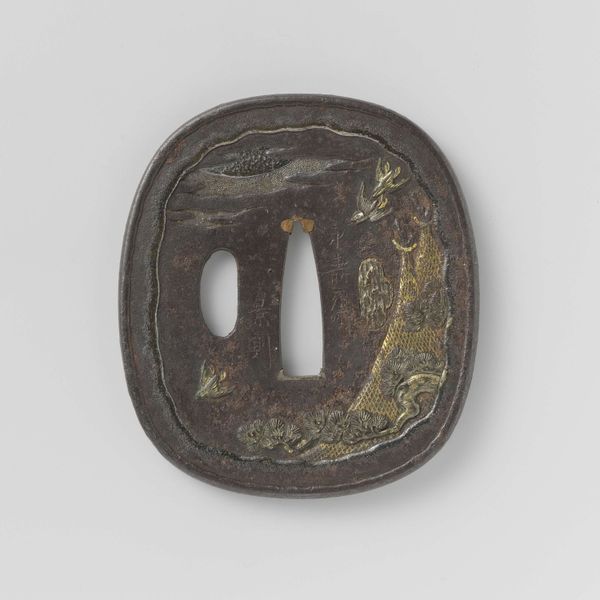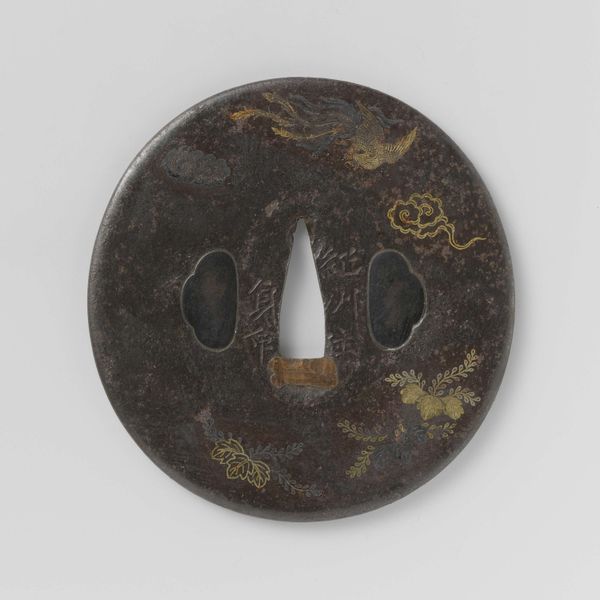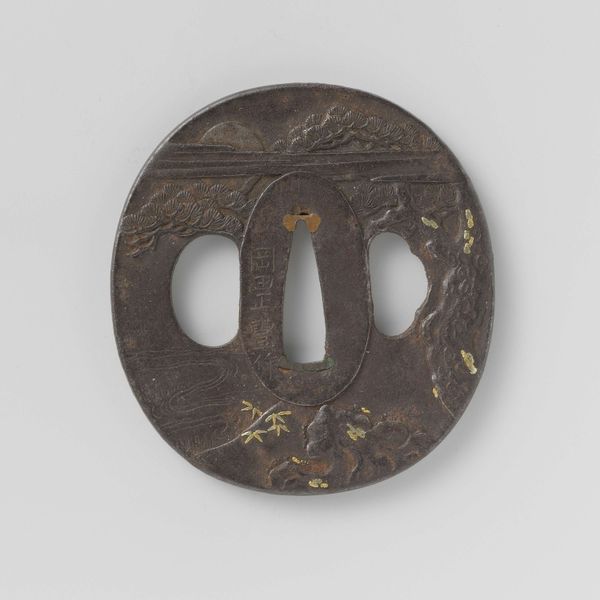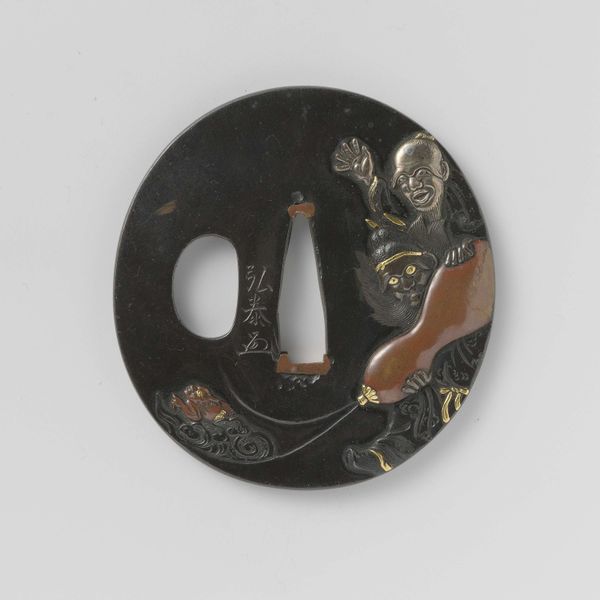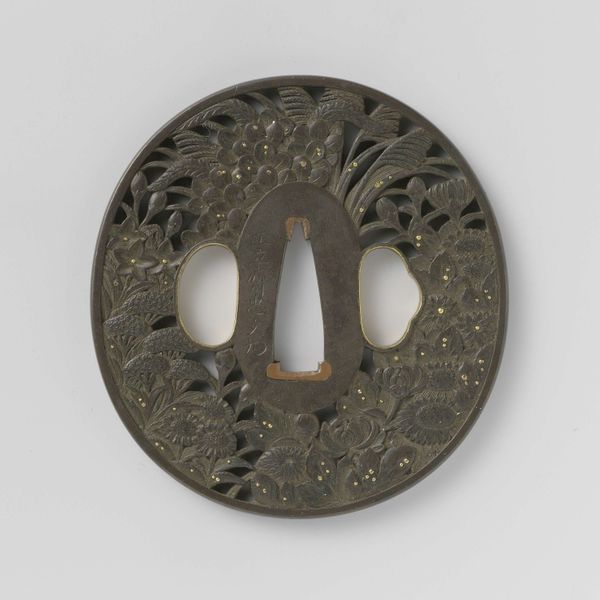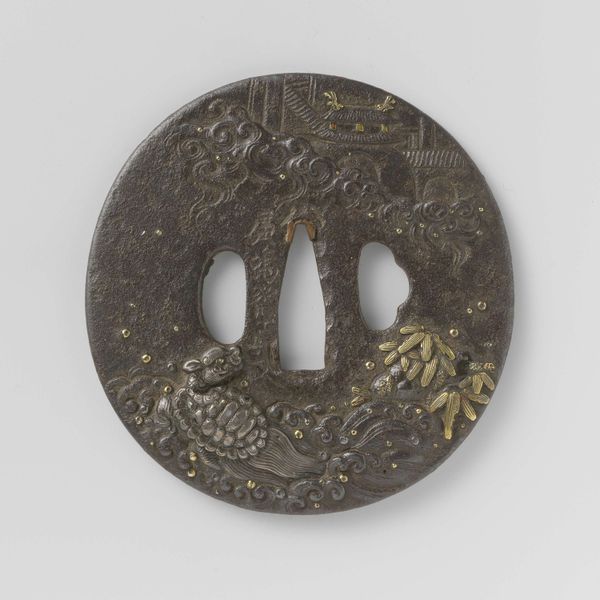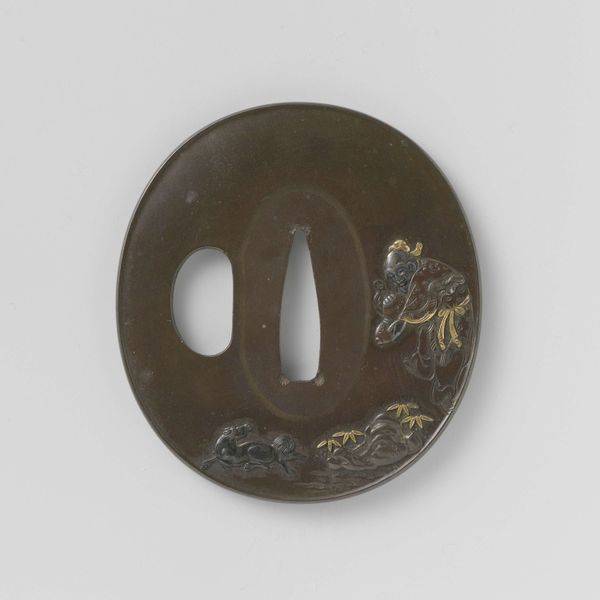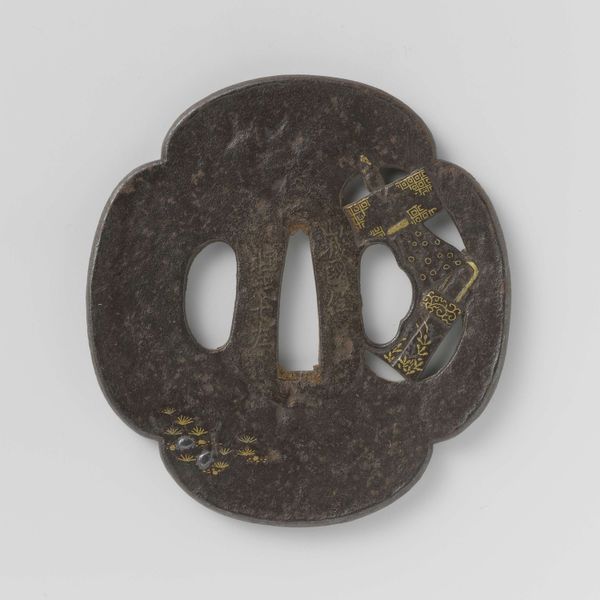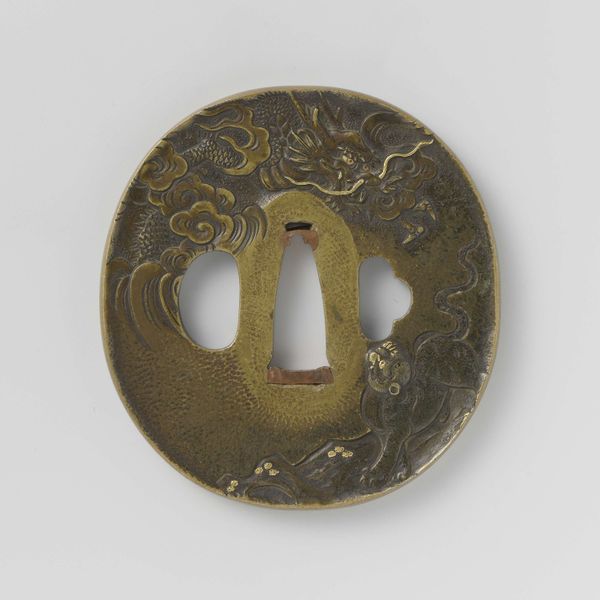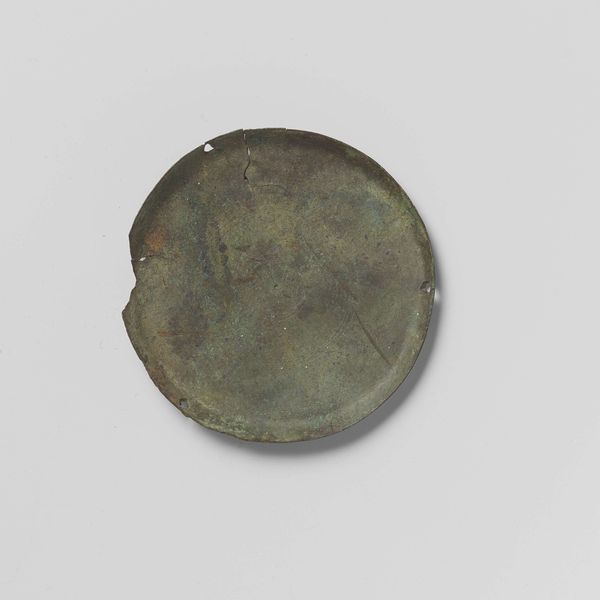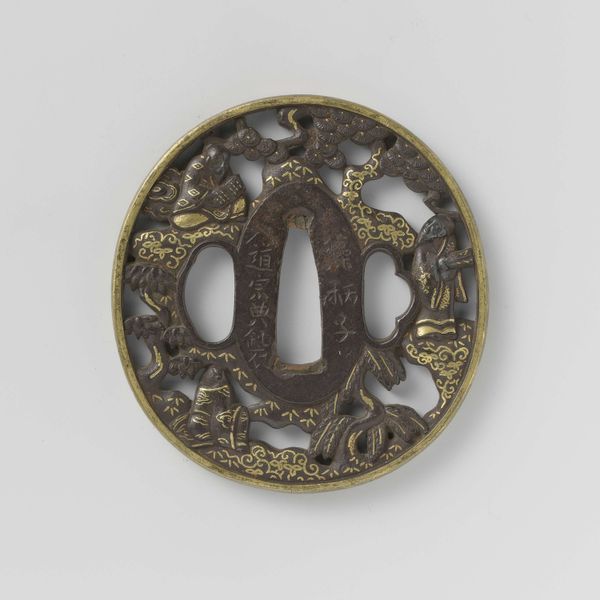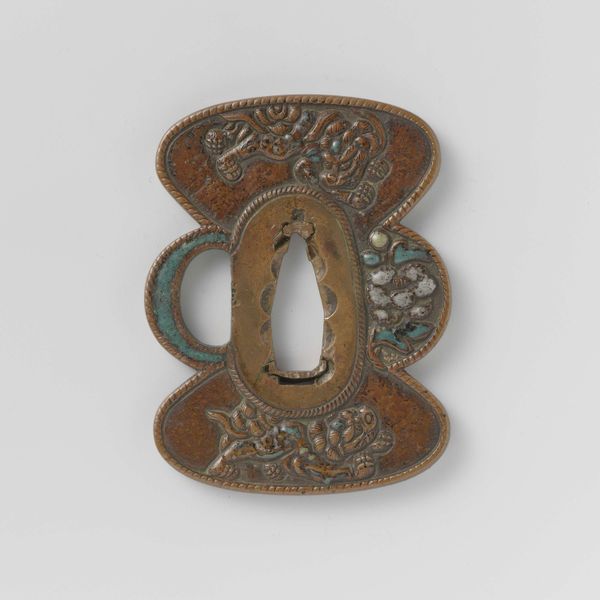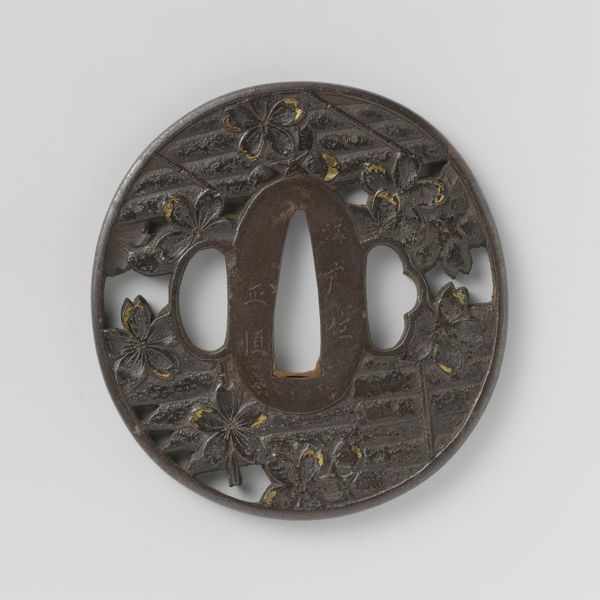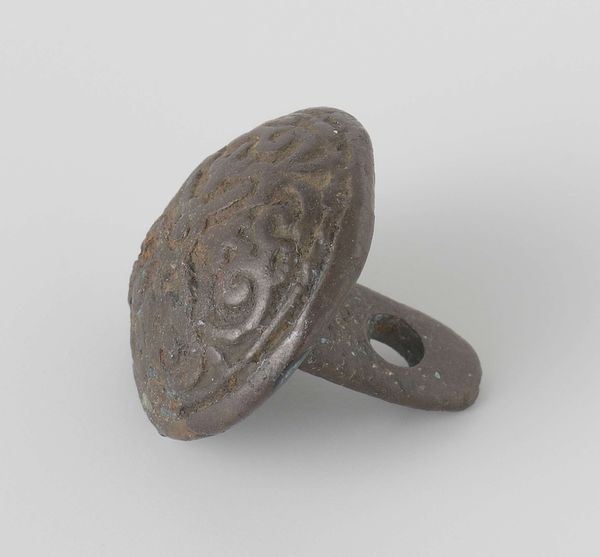
metal, sculpture
#
metal
#
sculpture
#
asian-art
#
sculpture
#
decorative-art
Copyright: Rijks Museum: Open Domain
Curator: It looks like time, and maybe some battles, have definitely left their mark! Editor: Indeed. What we’re looking at here is a hand guard, dating from somewhere between 1600 and 1900. Crafted from metal, it’s a striking example of decorative art, a piece born from a very specific craft and context. Curator: There’s such a quiet beauty to it. You know, beyond its utilitarian purpose. Holding it, you can almost feel the weight of history. Not just war, but also the rituals surrounding it. Editor: Exactly! Think of the smith who labored over this piece, forging the metal, meticulously shaping it, maybe even imbuing it with symbolic meaning for the warrior who would wield it. This object speaks to skill, material, and ultimately protection and labor, not only beauty. Curator: I love that tension though, the artistry intertwined with pure functionality. That dark, aged patina practically whispers of smoky forges, of skilled hands shaping metal with fire and hammer. It becomes something much greater than its function, something reverential and precious, almost. I can’t help but ponder on the idea of resilience and vulnerability. This unassuming disk protected a warrior's hand but couldn’t, perhaps, guard against emotional wounds. It feels deeply human. Editor: And considering the social hierarchy surrounding the warrior class at that time, we have to ask—who truly benefited from the craft? How did labor intersect with power, class, and even trade? Even within decorative art, a lot of labor is used to mask unequal social conditions, which ultimately makes something simple as an object like a tsuba quite a complicated signifier of human relationships. Curator: I find myself feeling the echo of forgotten lives lived in its presence. What a reminder that even the most humble object can be a vessel brimming with meaning. Editor: Agreed. And that simple forms belie layers of stories concerning both craftsmanship and societal structures. A tsuba indeed holds an unexpected complexity.
Comments
No comments
Be the first to comment and join the conversation on the ultimate creative platform.
